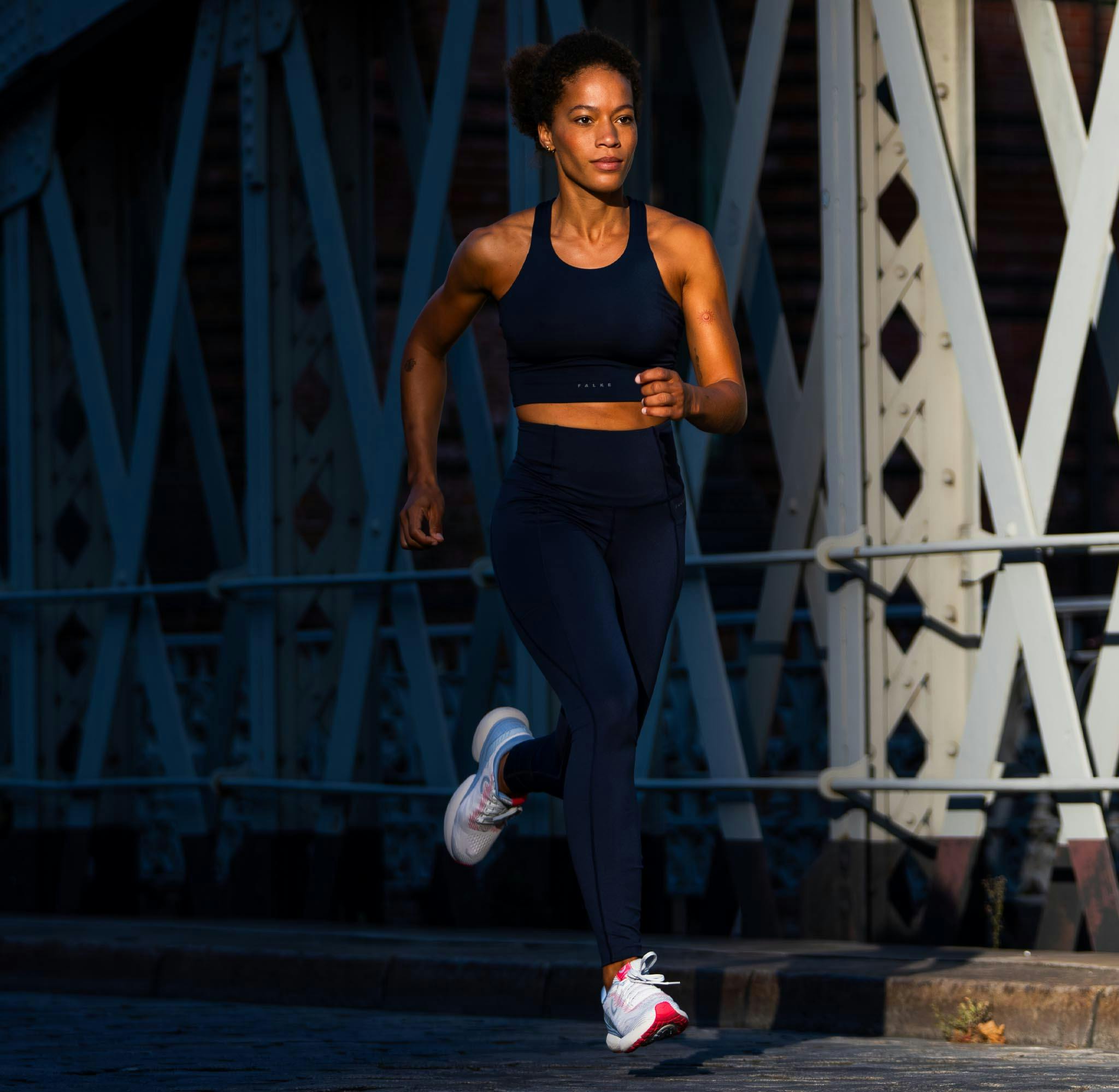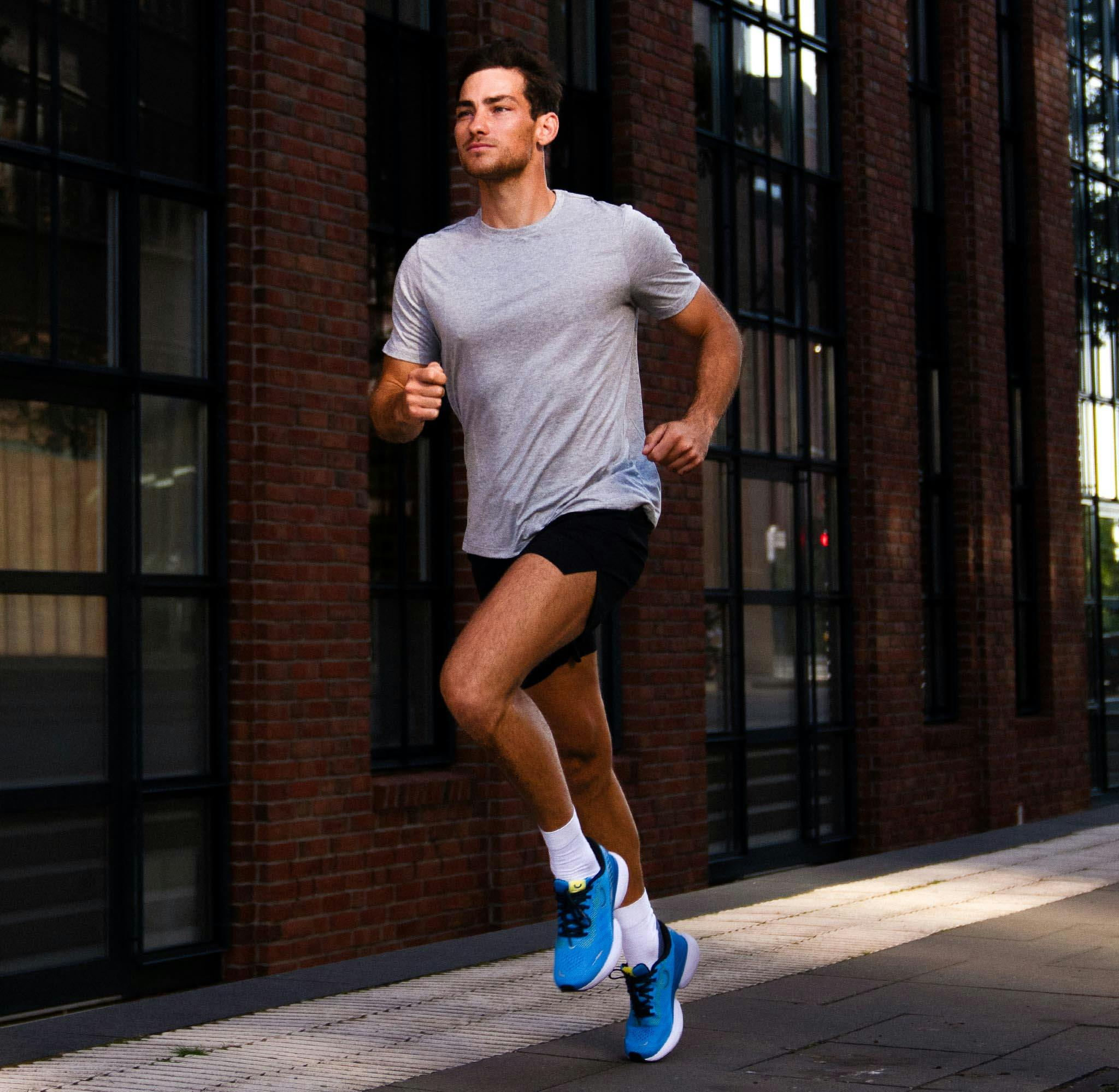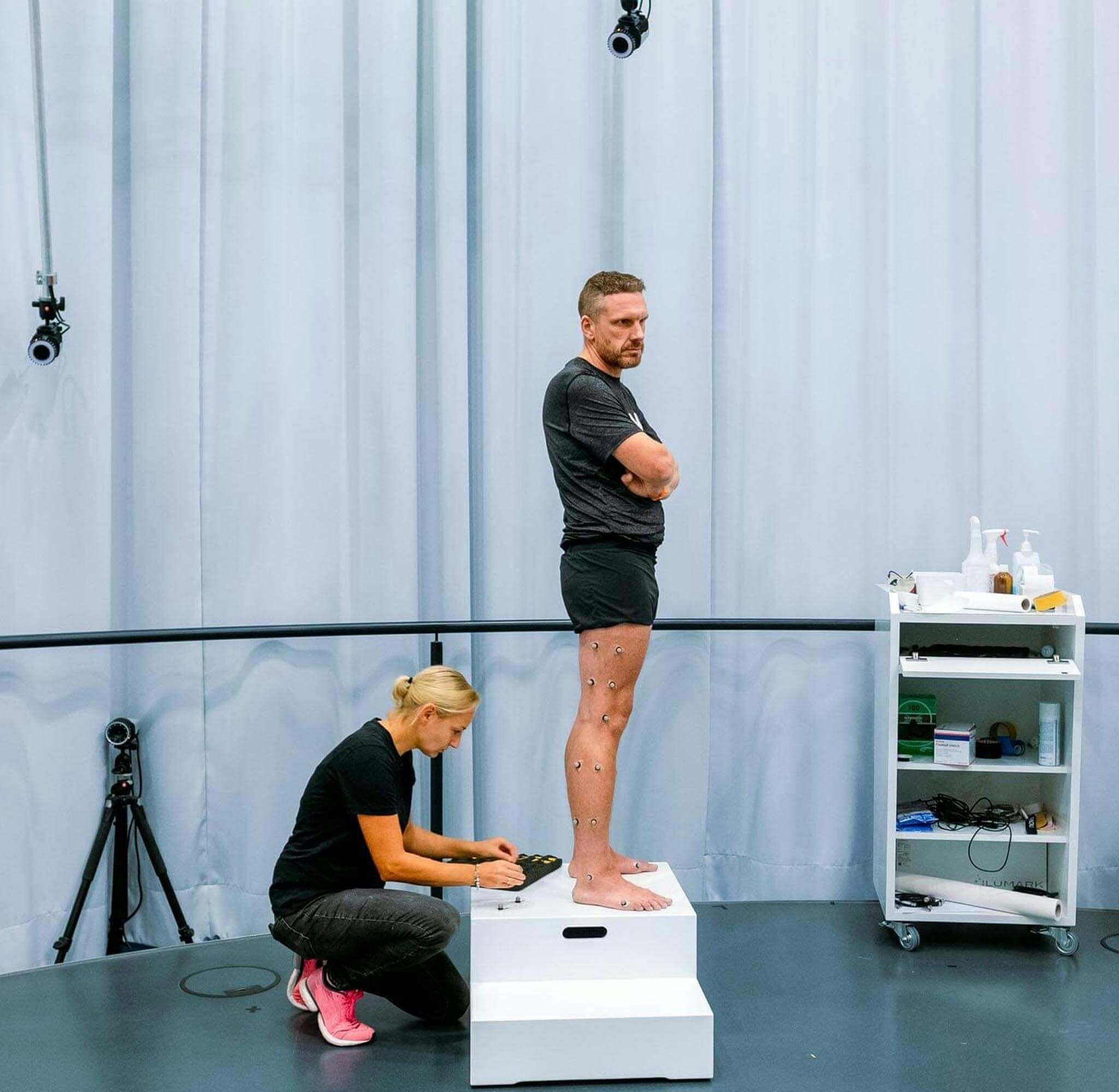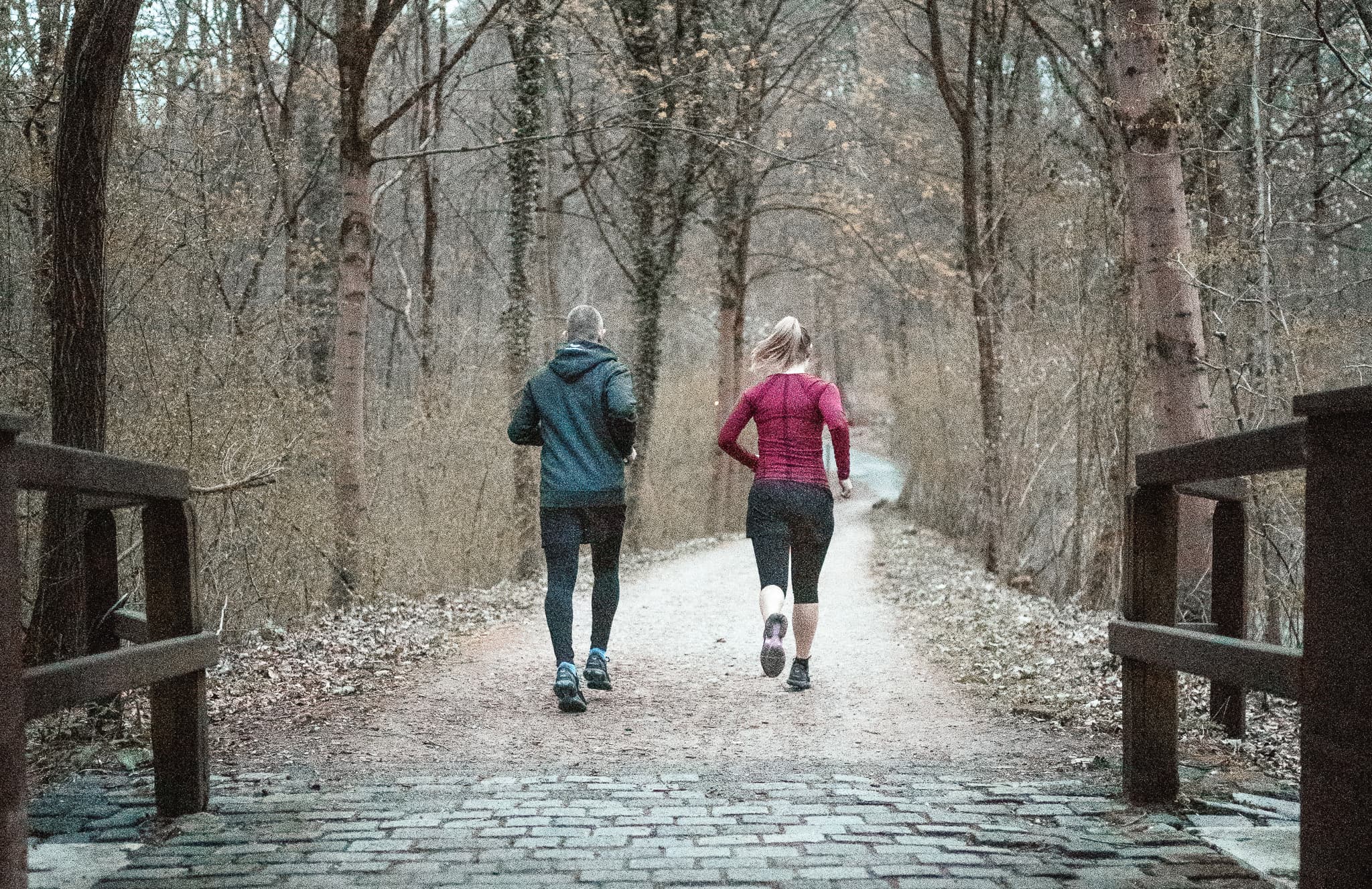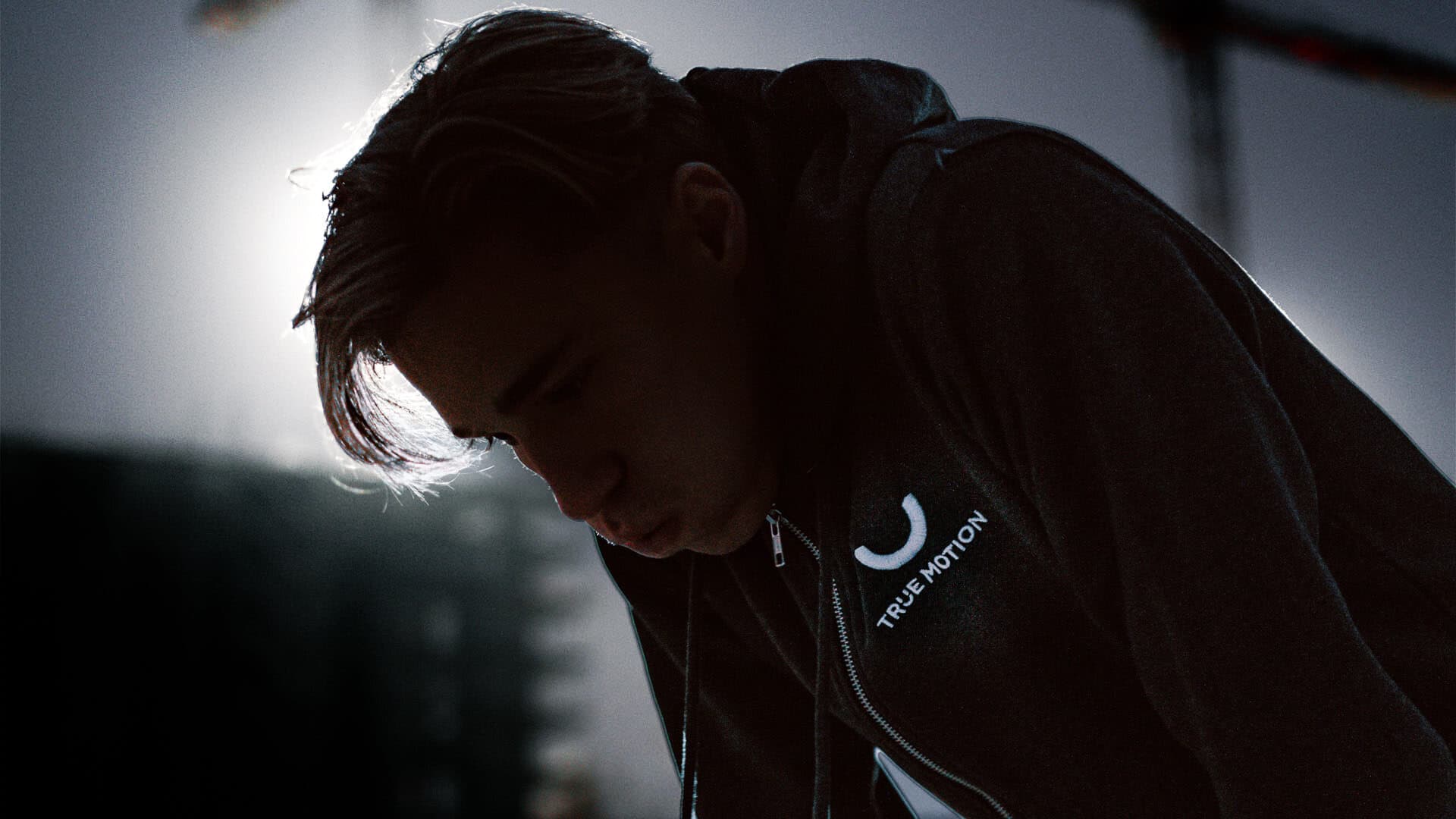
Running in Cold Weather – Tips for Exercising in the Winter
12th November 2021
Winter running is healthy. Sure – after all, we strengthen our immune system and protect ourselves better from colds. However, the colder it gets, the greater the risk that we will get injured when we run. In colder temperatures, it’s even more important to warm up properly. But that’s not all, adequate clothing and the right running shoes also play a crucial role. Here are the most important tips for running in the winter – and good reasons why we should definitely do it.
Content:
What happens in our body when we run in the cold
The right equipment for winter running
Support and upper – the right running shoes for the cold season
Six tips for running in sub-zero temperatures
Anyone who goes running in the winter knows the pitfalls all too well. When the temperatures drop, we find it harder to breathe. We simply don’t feel as efficient. But that’s quite normal – and that’s why it’s all the more important to prepare well before exercising in the cold. If we run in sub-zero temperatures, we not only have to warm up thoroughly but we also need the right running gear. The reasons for this are biological.
What happens in our body we run in the cold
If it is really cold outside, our muscle metabolism slows down which leads to a decreased performance of our muscles. This is exactly what we feel when we go running in sub-zero temperatures. The reduced muscular and neuromuscular performance slows down the stabilization of our joints. We run less efficiently – and the risk of injuring our muscles, tendons, and ligaments increases.
The explanation behind this is obvious. For example, the reduced metabolism in our muscles means that the joint fluid is thicker than usual. Simply put, it is no longer as slippery as it is in warmer temperatures. This, however, is problematic. Because the altered fluid leads to an increase in the frictional force between joint partners. When running in the winter, the joints in the foot, ankle, knee, and hip are particularly affected. The lower back, the so-called lumbar spine, is also subject to additional stress when running in cold temperatures. For us runners, this means that we should warm up our bodies slowly and extensively before running in the winter.
The right equipment for winter running
In general, it is not a problem to go running in the winter. “In principle, running is uncritical up to minus ten degrees Celsius,” says Gert-Peter Brüggemann, professor of biomechanics and co-founder of True Motion. Nevertheless, the right running gear matters in sub-zero temperatures. “This protects the body from hypothermia and keeps the working muscles and also the tendon-ligament apparatus warm,” explains Brüggemann. In particular, we should keep the leg muscles and the ankle, knee, and hip joints warm.
The best way to do this is to wear long, breathable clothing when running in the winter. Long running pants protect the working muscles of the legs in cold weather and also the knee and hip joints. Long running socks also protect the ankle, Achilles tendon, and calf muscles.
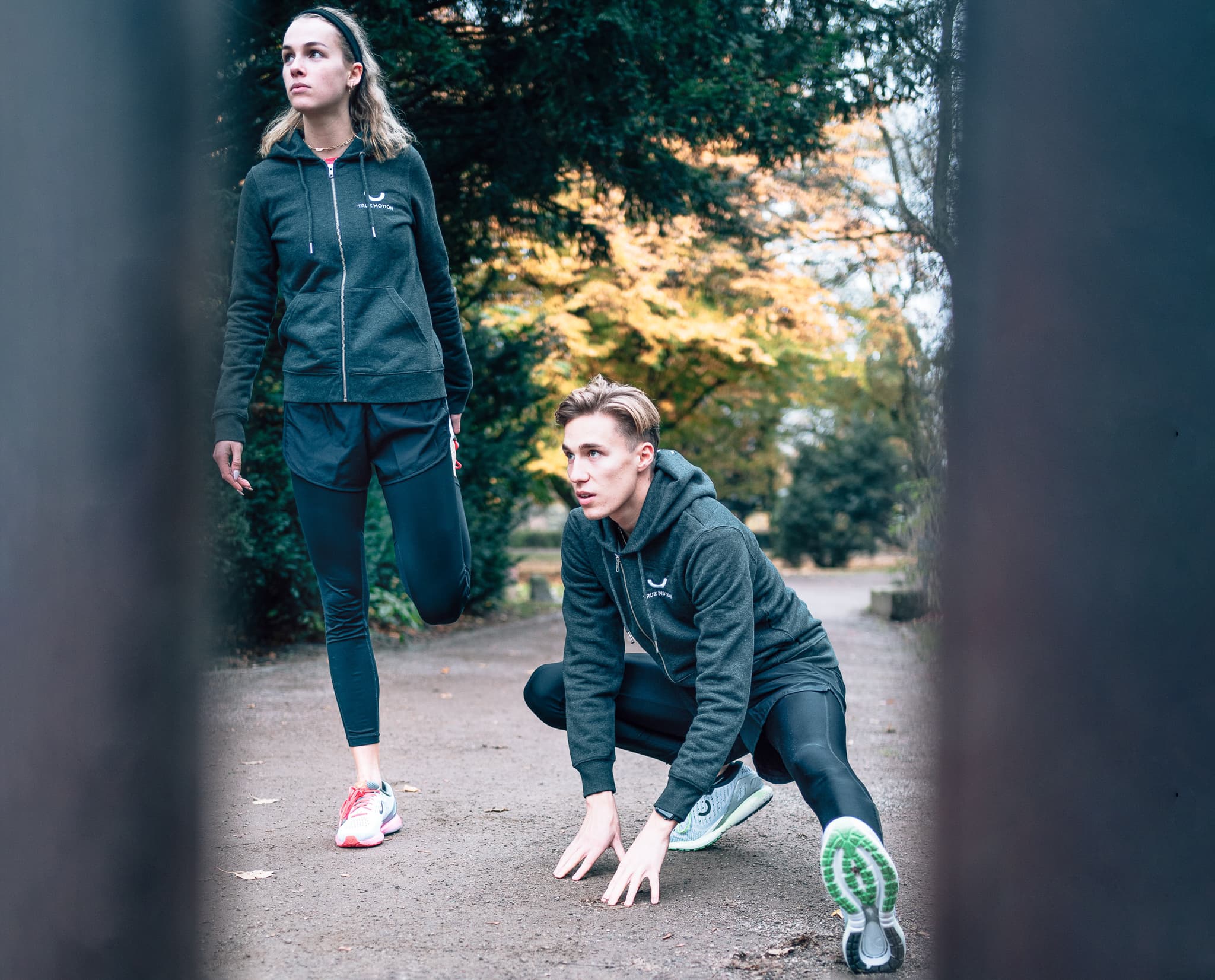
While long running pants and socks protect our lower body well from the cold, the best way to keep our upper body warm in the winter is to wear layers. About three layers are ideal for most runners. In addition to a long-sleeved functional shirt, a warmer, breathable running jacket also helps. In addition, we should also wear a hat and gloves when running on cold days. Heat loss particularly occurs at the hands and the head. If we don’t counteract this in the winter, we will risk hypothermia if we run outside for too long.
Support and upper – the right running shoes for the cold season
If we go running in sub-zero temperatures, however, it’s not just adequate clothing that matters. The right running shoes are also important. Just like on rainy days, a good grip and the right upper are crucial for running shoes in the winter. Among other things, icy and snowy spots on the roads make our run more dangerous than in the summer. If our running shoes don’t have enough grip, we may slip.
"Not only the outsole lugs of the running shoes, but also the material is important when we go running in the winter"
Running shoes for the cold season should therefore have more outsole lugs than usual. In principle, the more lugs a running shoe has, the more grip it offers. If we compare different running shoes in stores, we quickly notice which shoes are potentially better suited for winter units than others.
However, not only the outsole itself is important, but also its material. Certain properties improve the materials’ slip resistance – and thus also our grip when running. In studies, grip is measured with the so-called coefficient of friction. Biomechanist Brüggemann explains, "A higher coefficient of friction allows for greater traction, which in turn leads to safer running."
To provide good traction on wet, slippery surfaces, the outsole of the U-TECH Nevos Element has a rubber-like trim – known as Green Rubber. Scientific studies have shown that the coefficient of friction of the U-TECH Nevos Elements is on average up to 30% higher than that of conventional running shoes.
If we run not only in cities, but also, for example, in forests at a higher elevation, we can attach universal spikes to our running shoes. These work like snow chains on car tires.
DON´T GIVE RAIN A CHANCE:
DISCOVER THE U-TECH NEVOS ELEMENTS
NATIVE TO ALL ELEMENTS
The U-TECH Nevos Elements: the variant of your favorite model defies all weathers and the elements. As upgrades, we added a mud- and water-repellent, warmer upper and designed an entirely new outsole that provides firm footing on any surface – especially in wet and cold conditions.
In addition, running shoes for winter training should be made from a densely knitted upper, so that they are not immediately soaked in snow and ice. This not only protects against moisture, but also against the cold. Because especially at the beginning of our running session, our toes may feel like blocks of ice. If there’s a lot of wind blowing into the running shoes during the run, our feet may not warm up at all.
Ensuring safety in the dark
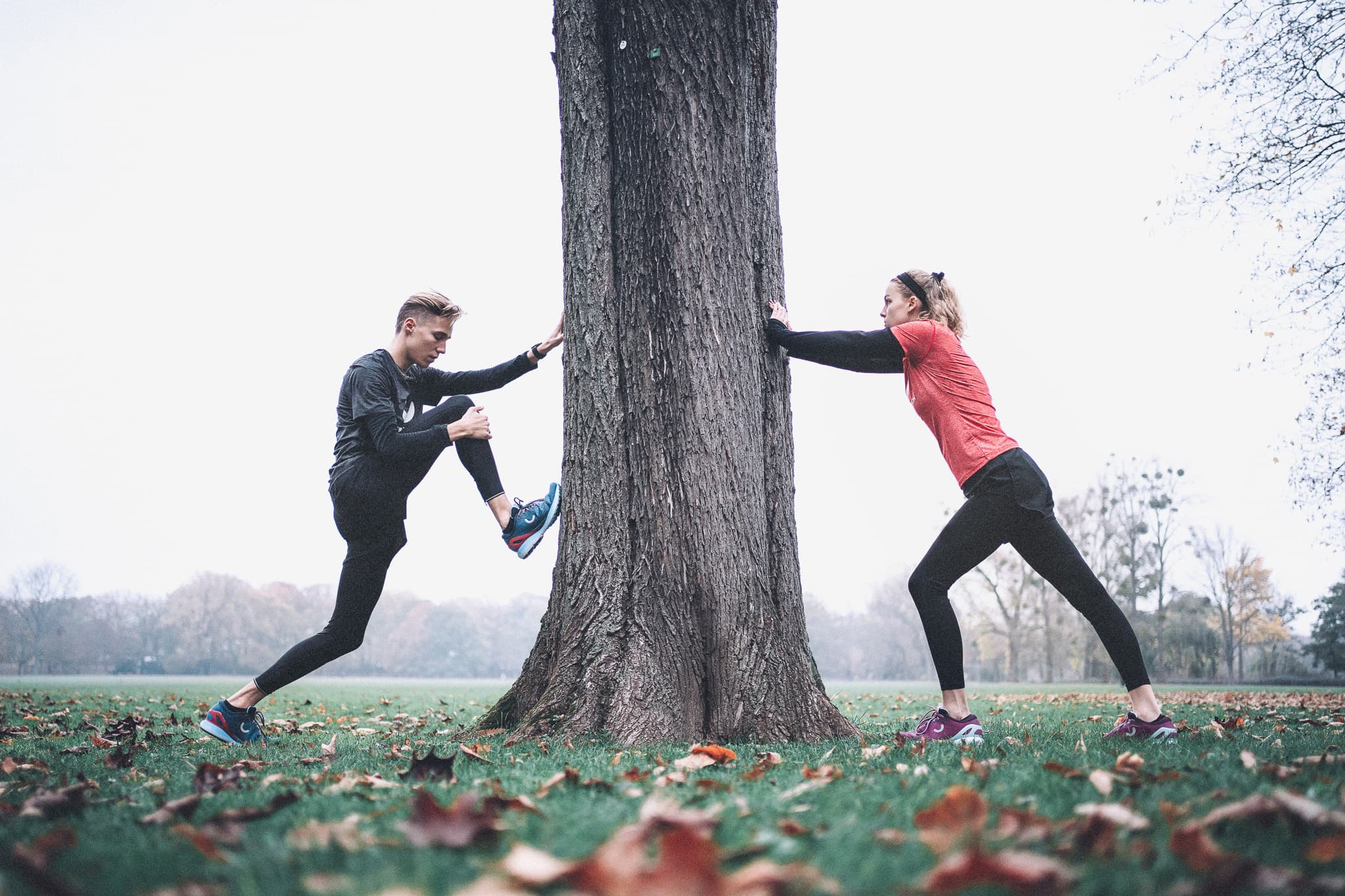
But whether the roads are covered with snow or dry – in the winter, we usually run when it is still or already dark outside. For us runners, this has two consequences. First, we have to run more carefully than usual. We often see icy spots or blocked road sections only at the last moment. On the other hand, other runners, cyclists, or car drivers cannot see us well. If we run in the dark, we have to draw attention to ourselves.
In order to be spotted in time by other road users, our running gear should be reflective and glow in the dark. This applies to our running shoes as well as to our clothing. For this reason, True Motion running shoes offer 360° reflectivity.
Six tips for running in sub-zero temperatures
To ensure that running on cold days works, six more tips for running in the winter are helpful in addition to having the right equipment.
Warm up properly: When it’s cold outside, this affects our bodies. In order to properly stimulate the metabolism of our muscles, it is important to warm up slowly, yet carefully. To stay healthy, it’s advisable to warm up for 15 minutes instead of ten before a winter run.
Find a suitable route and do not train too long and too intensively: How long we run varies individually and depends on our level of performance. In principle, however, the joint cartilage, menisci, and ligaments are less resilient, especially in sub-zero temperatures – and we therefore tire more quickly when we exercise in the winter. Therefore, it is particularly important to choose a running route where we don’t risk getting too cold or training too intensively.
Don’t breathe in the cold air: If we breathe in too much cold, dry air too quickly, breathing problems can develop. When running, we can prevent this by exercising more slowly while breathing shallowly and evenly through the nose. In addition, in very low temperatures, it helps to wear a scarf or sports mask over mouth and nose.
Run upright and pay attention to your body’s center of gravity: Especially in the winter, icy surfaces increase the risk of slipping. In order not to fall down while running, it helps to have the right running posture in addition to a good, non-slip running shoe. To have better balance, we should make sure to place our feet under the center of our body when running instead of too far forward.
Move the cool-down indoors: Even if it’s cold outside – we still sweat when we run. But especially at the end of our training session, this can become a problem. If we reduce the intensity, we start to feel cold in our wet, sweaty clothes after just a few minutes. We should therefore move our cool-down indoors – and at best take off our sweaty clothes right away.
Shower immediately: Once we have finished our workout, the first thing we should do is take a shower. This prevents us from getting cold or even hypothermic.
Why we should run even in the winter
In the winter, we can go running in temperatures up to minus ten degrees Celsius without any problems if we have the right clothes and running shoes. And that’s a good thing. Because if you run on cold days too, you will stay fit and in training. What’s more, by exercising in the winter we strengthen our immune system. If we go running on cold days, we will increase the thermoregulation of our body and thus our body’s defenses. The risk of catching a cold is reduced.
However, we don’t just support our health this way. Once we have reached operating temperature in winter, we need less energy for sports. The reason: when the outside temperature drops, our bodies don’t have to cool down on their own during exercise. We can therefore focus more on our sport – and on some days perhaps also admire the snow-covered landscape.

NEVER RUN OUT OF
NEWS
Discover all True Motion stories – and be the first to hear about new products, promotions and events. Simply, center your run!
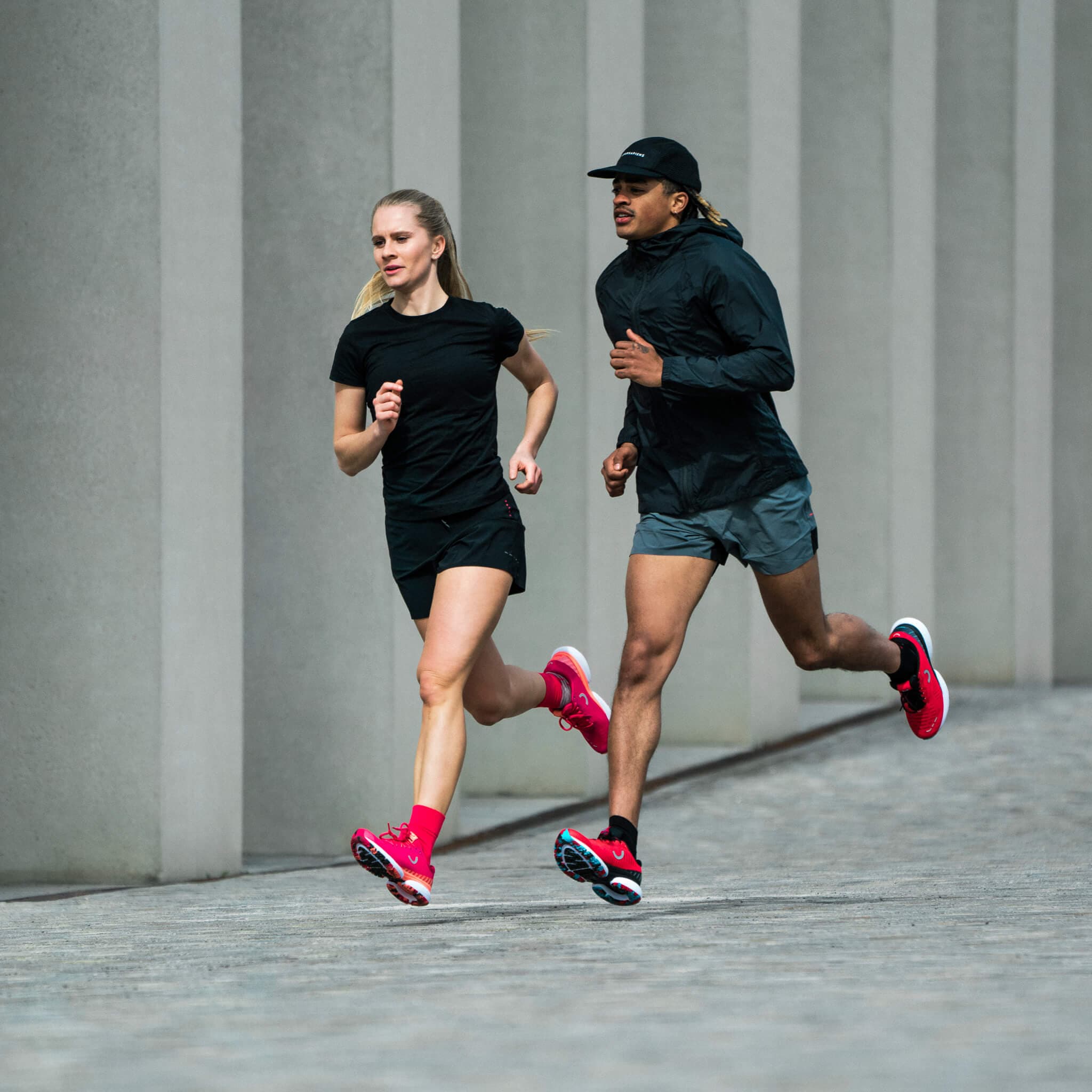
NEVER RUN OUT OF
NEWS
Discover all True Motion stories – and be the first to hear about new products, promotions and events. Simply, center your run!
READ THE NEWEST
U-RUN STORIES
Sabrina Mockenhaupt: This shoe got me running again
2025-10-31

Sabrina Mockenhaupt has achieved everything that many runners dream of. Running was and is her life, until the pain eventually became too much. Today, she is running pain-free again – this is her story.
Laura Schmidt: I have rediscovered running for myself
2025-03-07
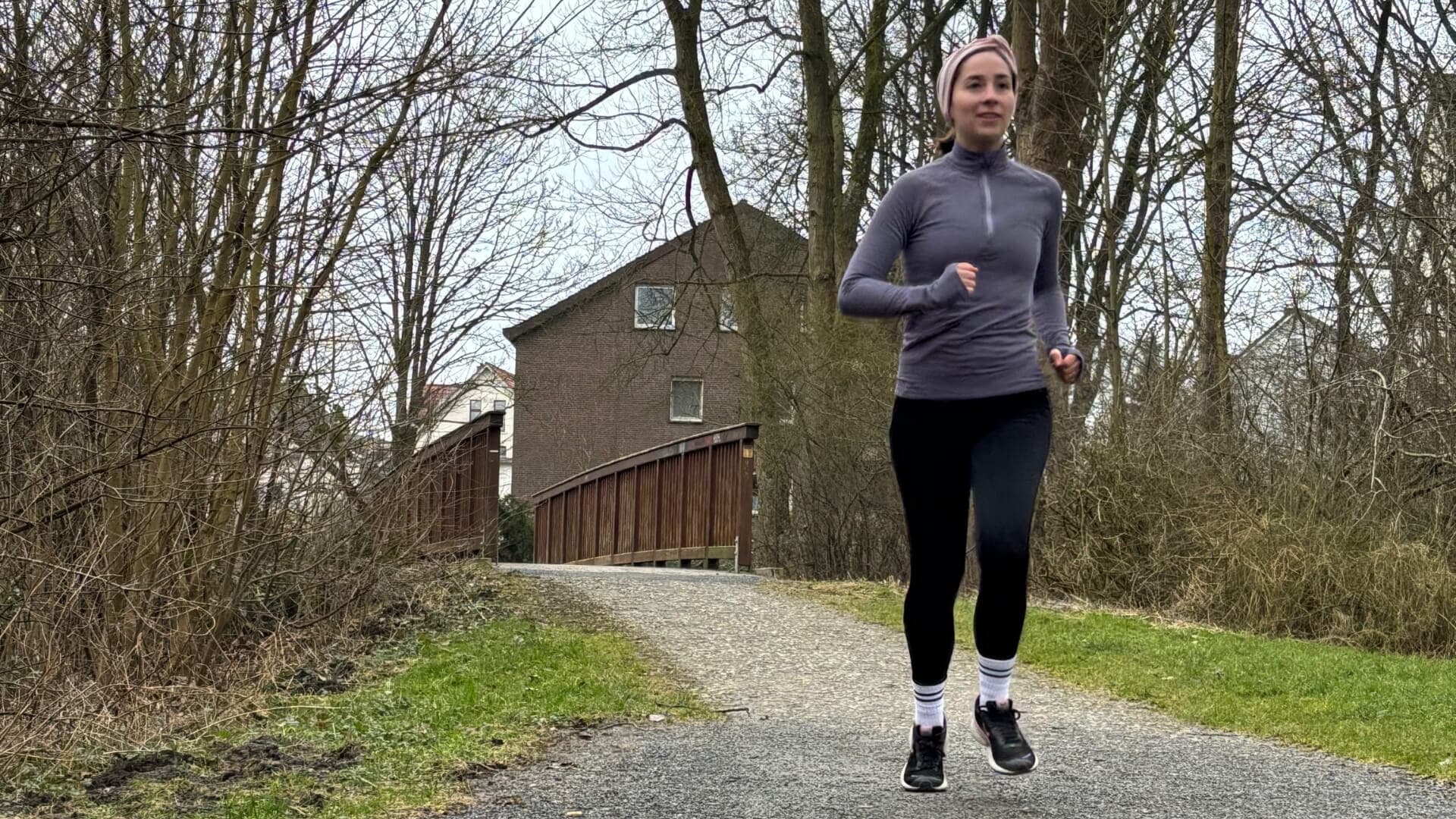
My name is Laura. I started running eight years ago – to clear my head after work. But knee pain kept me from being able to run regularly. A new pair of running shoes was finally the solution. Today I run pain-free. This is my true runner story.
READ THE NEWEST
U-RUN STORIES
Sabrina Mockenhaupt: This shoe got me running again
2025-10-31

Sabrina Mockenhaupt has achieved everything that many runners dream of. Running was and is her life, until the pain eventually became too much. Today, she is running pain-free again – this is her story.
Laura Schmidt: I have rediscovered running for myself
2025-03-07

My name is Laura. I started running eight years ago – to clear my head after work. But knee pain kept me from being able to run regularly. A new pair of running shoes was finally the solution. Today I run pain-free. This is my true runner story.
RECOMMENDED BY








RECOMMENDED BY








GET 10 % OFF YOUR FIRST ORDER!
Get your personal running updates with exclusive discounts, product news, training plans and tips for healthy running - straight to your inbox. 10% discount on your next order.
SERVICE
ABOUT US
© 2025 True Motion Running GmbH

